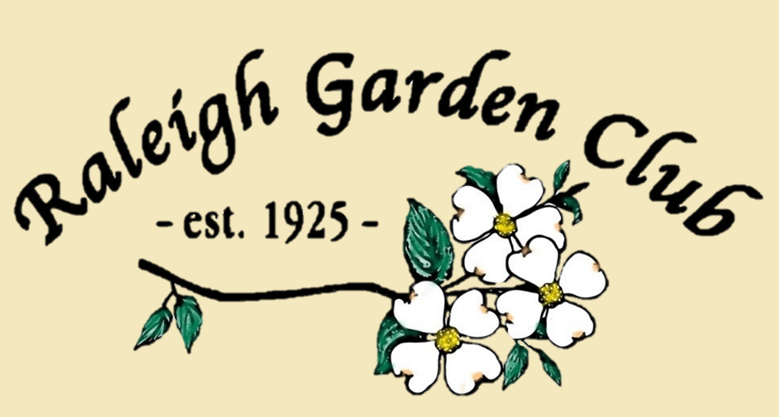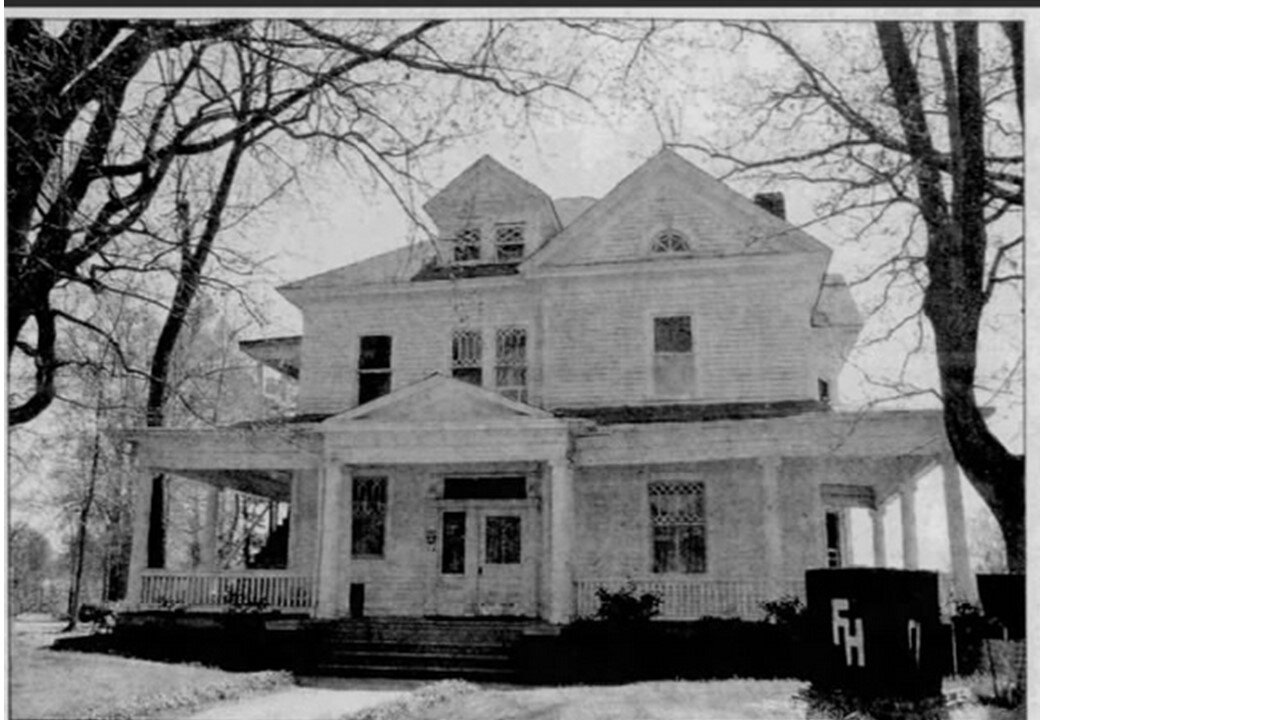
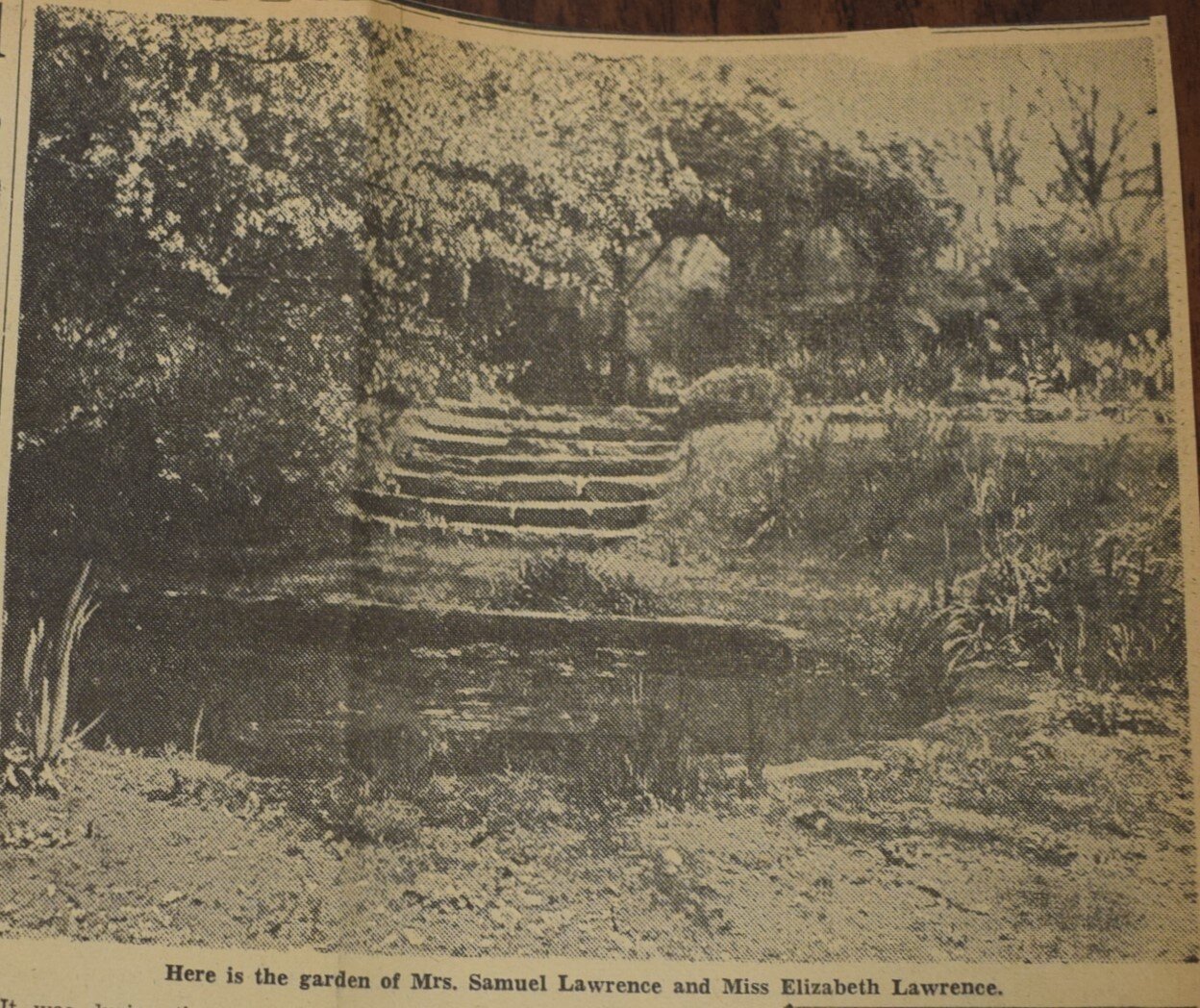
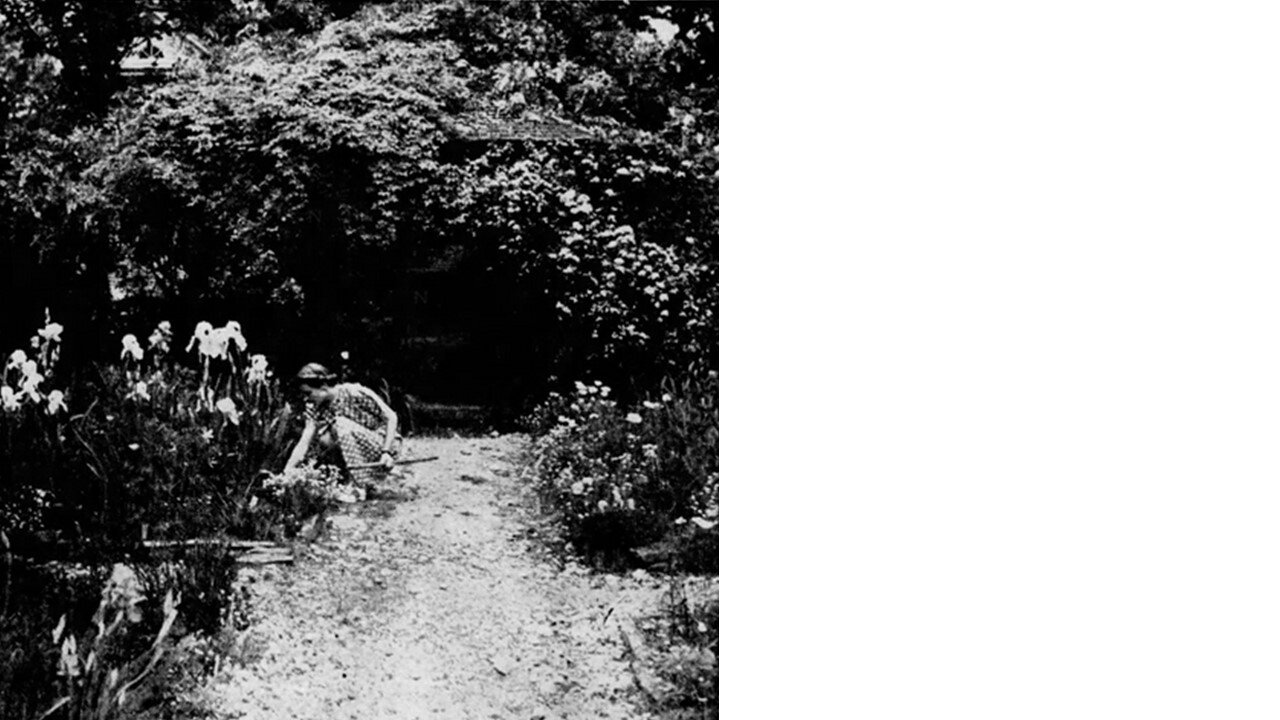
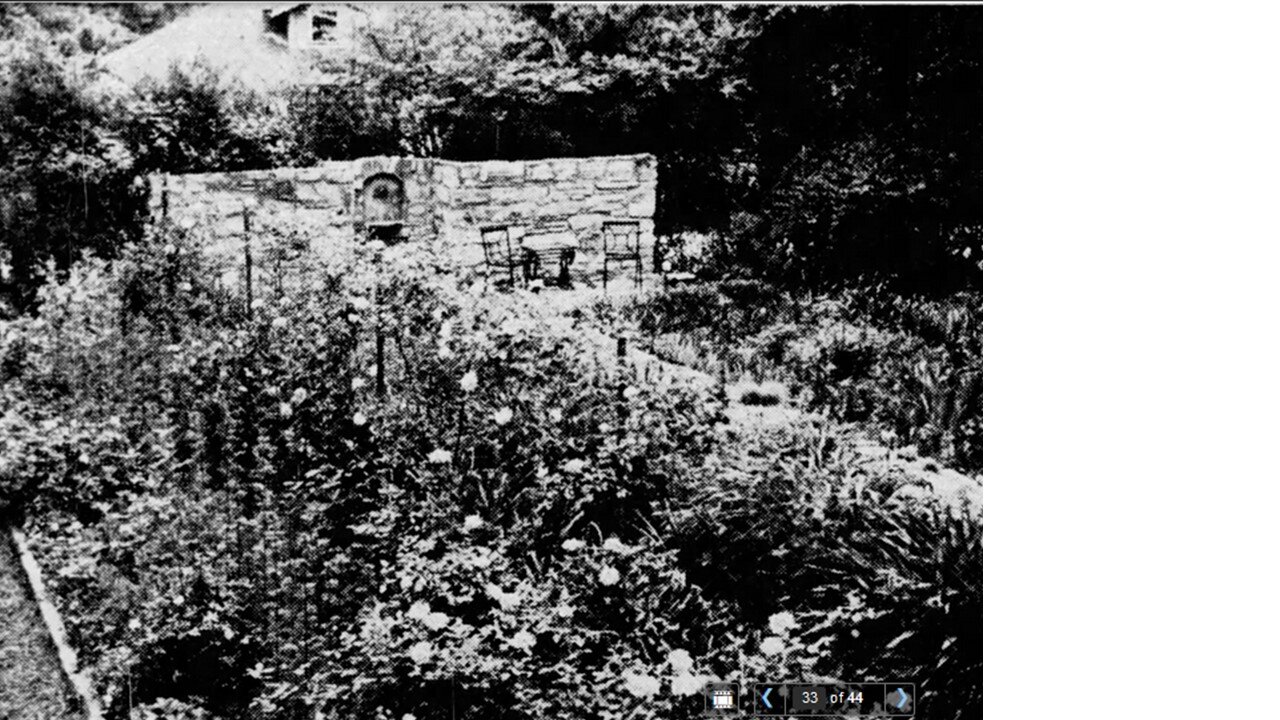
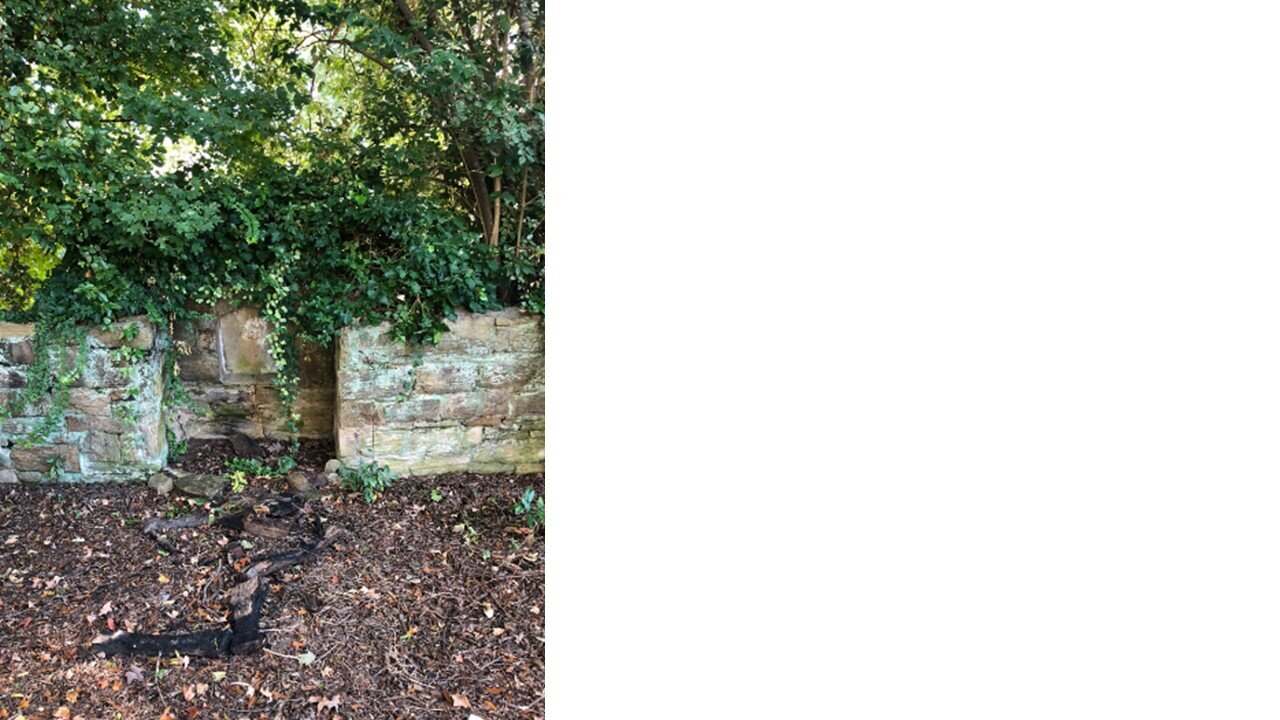
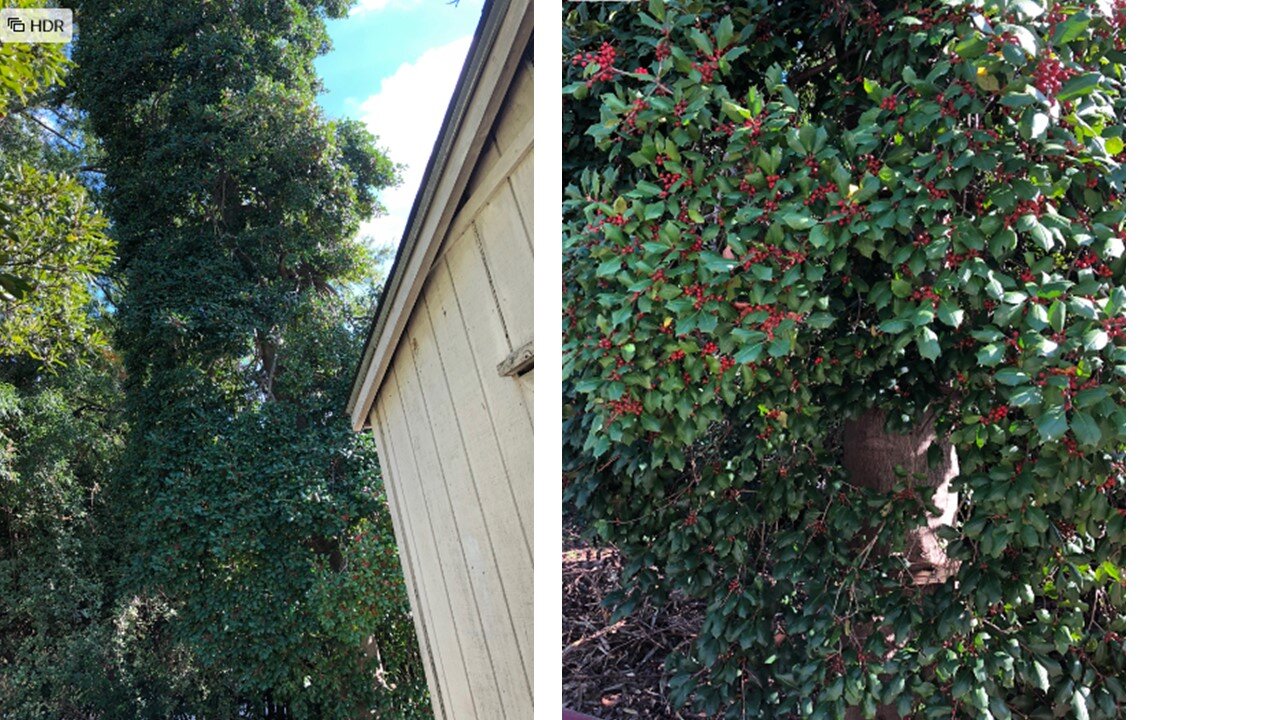
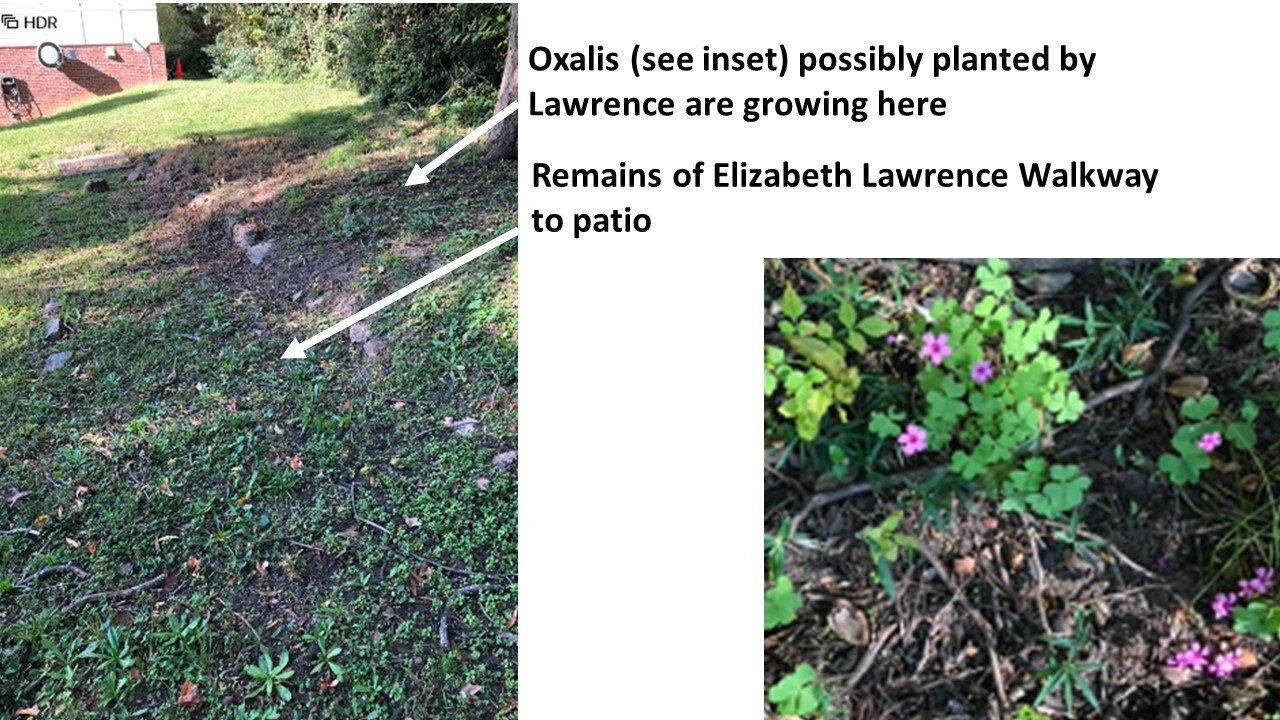


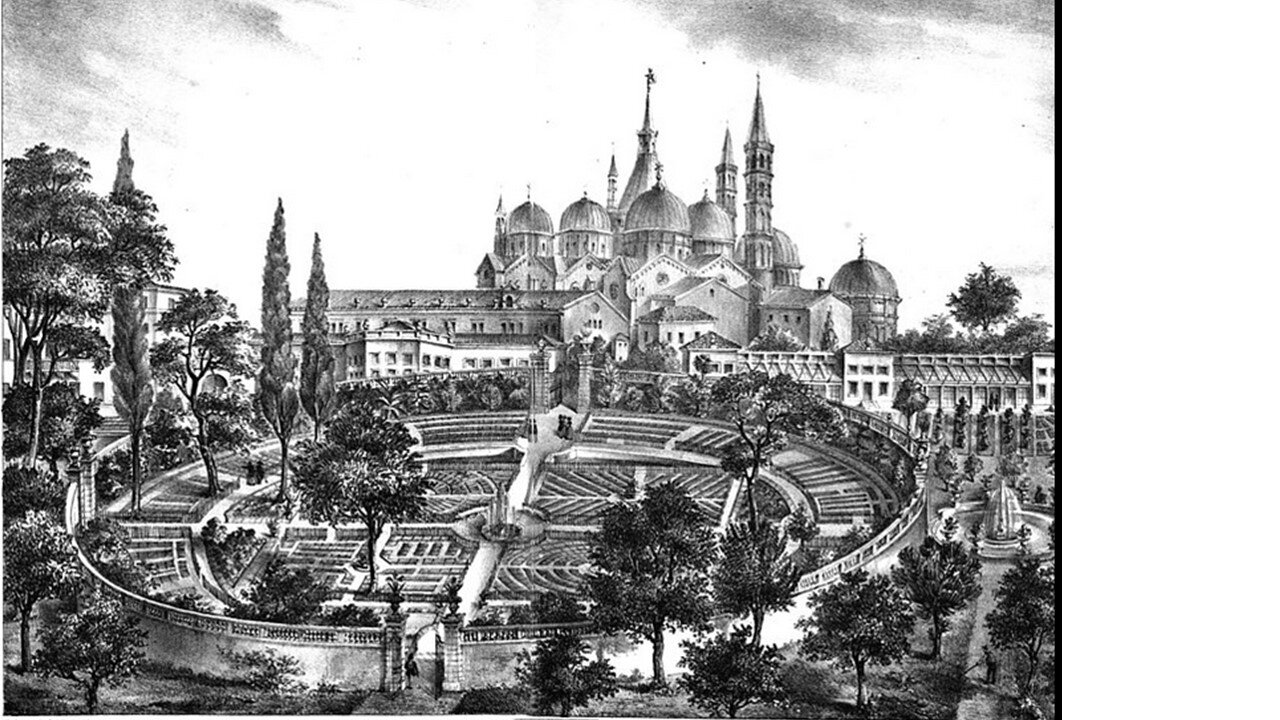
by Penny Amato
Elizabeth Lawrence was a prominent North Carolina gardener and internationally known horticulture writer of the mid 1900’s. “She is regarded as one of three preeminent figures in the horticultural history of the Southeast, sharing this short list with Thomas Jefferson and J.C. Raulston.” She was the first woman to graduate from (present-day) NC State University with a degree in landscape architecture in 1932, and worked with Raleigh Garden Club (RGC) member Isabel Busbee in this capacity. Although she lived in Raleigh until 1948, where she was very active in the Raleigh Garden Club, she became more renown after her move to Charlotte due to the popularity of her books, especially A Southern Garden, and her weekly newspaper column in the Charlotte Observer. Our RGC “footprint” focuses on Elizabeth’s Raleigh years.
Elizabeth Lawrence and her family moved to Raleigh in 1916, when Elizabeth was 12 years old, so that she and her sister Anne could attend St. Mary’s School. The Lawrence’s bought a house at 115 Park Avenue (close enough to walk to school) where Elizabeth and her mother, affectionately known as Bessie, established a large flower garden on the one acre lot. As the years progressed Elizabeth eventually became the main gardener while her mother took care of the running of the household including caring for Elizabeth’s father as his health declined until his death in 1926.
Elizabeth used this garden (as well as her garden in Charlotte years later) as a “living laboratory” where she experimented with hundreds of plants and bulbs to find those that grew the best in the “middle South” with an emphasis on plants for an average garden that would grow with a reasonable amount of care and a reasonable amount of intelligence. In the forward to her first book, A Southern Garden - A Handbook for the Middle South, she says “if a plant grows for me, it will grow for anyone”. She was also adamant that a Southern garden should be “beautiful in all seasons” and considered winter the beginning of the garden year.
There is not much published information about Elizabeth Lawrence’s Raleigh garden. The garden was established by the former owners of the house. Elizabeth could not remember the name of the “famous garden designer” who designed the garden but had seen his name in a garden magazine of her mother’s. Her garden was described in 1938 as an “interesting scientific and experimental garden having raised flower beds for drought-loving plants and low beds for the moisture loving flowers, an herb garden, a fine rock garden and a flowering crabapple leaning over a pool". We know the garden had white trailing moss verbena, pink Persian candytuft, mallows, crinum, bergamot, garden phlox, and helenium and, of course, many tiny bulbs including snow drops, winter aconite, narcissus and Siberian iris. The bulbs were planted in a separate area where they were allowed to bake dry in the summer sun. This area was overplanted with drought tolerant annuals in the summer.
In 1947 Woodrow Price wrote an article for the News and Observer about Ms. Lawrence’s garden emphasizing her desire to discover the best growing plants for the South by bringing in plants from other parts of the world with similar climates. He said that she had hundreds of plants from Europe, Africa, Asia, South America and North America – many obtained through amateur and professional gardeners who read her articles or heard her lectures and would “immediately go out and dig up some particular plant that they would like her to experiment with in North Carolina”. He further mentions her meticulous record keeping including the name and origin of the plant; the bloom time, length and color; and the physical dimensions of the plant itself. She was instrumental in expanding the range of crinums that had previously been grown only in Florida and California, resulting in a medal from the National Amaryllis Society in 1943. Her collection included crinums from South Africa and Zanzibar as well as the only native North American crinum, Crinum americanus. Her favorite was Empress of India even though it would not grow in her own garden..
Elizabeth’s garden was featured on a RGC sponsored Garden Tour in April of 1939 and a photograph of an oval pool and a set of stairs appeared in the News and Observer. It was described then as a garden “entered through a pergola leading to a rustic summer house which is set in an oval design of walks and flower beds. The main path leads through an arch in a clipped hedge to a terraced cutting garden. The stone edges of the flower borders are planted with sun-loving rock plants. The garden is at its best in early April when the pergola is covered with white wisteria and the oval pool mirrors a flowering crab.”
In 1942, RGC member Charlotte Hilton Green wrote a review of Elizabeth’s first book “A Southern Garden” for the News and Observer. She visited the Lawrence Garden at that time where she and Ms. Lawrence wandered up and down the paths and through the copse [small group of trees] past the pool to the wildflower nook. Nearby a yellow banksia rose grew over the summer house which overlooked the garden. A photo of Elizabeth in her garden appeared in the paper in conjunction with this article.
I recently (October 2020) stopped by the property at 115 Park Ave (very near where the blue roofed IHOP used to be) and found the remains of Elizabeth’s garden, most notably a wall with a recessed arched niche that incidentally looks similar to a wall at Lawrence’s Charlotte garden where a plaque of the Madonna and child hangs. I also found a very tall holly tree that likely was part of the original garden. And I saw some oxalis coming up under a tree that may have been from her original plantings.
After years of use as a multi-family home after the Lawrence’s moved out in 1948, the property was purchased by the Farm House fraternity in 1969. In 2004, the fraternity decided to build a new facility that would better serve as a home for its members. There was an effort at that time to try to save the historic house led by then City Councilman Benson Kirkman and then Raleigh mayor Charles Meeker with hopes to save and refurbish the garden. Unfortunately, the fraternity did not want to sell the lot and the attempt to try to move it elsewhere was unsuccessful due to the inability to find a new location close enough for the move. The new fraternity house was built behind the original house right on top of Elizabeth’s former garden and the original house was then torn down.
By that time, the gardens were nearly gone; although in April 2000, Mary E. Miller, a columnist for the News and Observer, reported seeing squill and daffodil foliage underneath the oaks. As late as 2010, Tony Avent’s description of Lycoris x squamigera in the Plant Delights catalog noted that a row of surprise lilies still persisted in the Raleigh garden of the late garden writer Elizabeth Lawrence. Fortunately, several years before this, J.C. Raulston recognized the significance of the plantings at the Lawrence house and had many of them moved to the arboretum. On September 26, 1992, the Elizabeth Lawrence border at the (present-day) J.C. Raulston Arboretum was dedicated with a full day symposium focused on the life of Elizabeth Lawrence.
Not much is known about the other gardens Elizabeth Lawrence may have designed in the Raleigh area (some in conjunction with RGC member Isabel Busbee), but we do know she designed the plantings at the front of Raleigh Little Theatre. When the theater was built in 1939 the front was graded, retaining walls were installed, and the area was planted with trees—given by the Raleigh Garden Club—and bulbs and shrubs. Elizabeth was very good friends with Anne Preston Bridgers, a playwright who was instrumental (along with Mrs. Cantey Venable Sutton) in establishing the Raleigh Little Theatre. Through letters that Elizabeth wrote to Anne Preston Bridgers which were compiled into a book called, Becoming Elizabeth Lawrence - Discovered Letters of a Southern Gardener written by Emily Herring Wilson, we also know that Elizabeth tended the Bridgers’ garden that was located at 1306 Hillsborough Street, so perhaps a design credit could be given for that garden too. She also designed the esplanade of trees for the center of Glenwood Avenue that replaced the old trolley tracks. Six hundred seventy-seven trees and shrubs, chosen in combination to provide year-round beauty, were installed between Peace Street and Five points in 1934. The Raleigh Garden Club purchased 198 of the trees and shrubs, Mr. B.W. Kilgore donated 40, and the rest were provided by the city. Around the same time, Elizabeth and Isabel Busbee also gave professional landscape advice for the YWCA.
Additionally, although not in Raleigh, the Medicinal Garden at the Country Doctor Museum in Bailey, NC was designed by Ms. Lawrence in 1972. The garden’s layout of concentric circles surrounding a period millstone was inspired by the Botanic Garden of Padua in Northern Italy, the oldest medicinal garden in Europe. It was originally planted with over 60 medicinal plants that likely were used to make salves and tinctures by doctors in the late 1800’s and early 1900’s.
During her years in Raleigh, Elizabeth was active in the Garden Club movement including her membership in the Raleigh Garden Club. She served as librarian from 1930-1938, and even took garden books and literature on the road to display at various locales. She was a flower show exhibitor and judge for many years, but became disinterested in judging believing that flowers need not be perfect to be beautiful. She sponsored workshops for an RGC study group called “Gardening by Example” that included sessions on shade gardening, and blooms for all seasons.
Ms. Lawrence gave numerous talks at other Garden Clubs throughout the state and country with her travels taking her to Rocky Mount, Lumberton, Asheville, Charlotte, Danville, VA, Shreveport, LA, Cincinnati, OH, and Auburn AL. She even did a radio broadcast on garden design under the auspices of the Raleigh Garden Club in 1932. Her lecture topics were varied including “The Amaryllis Family”, “Flowers of England”, Fall gardening, “Rare Bulbs and Their Culture”, “Summer Blooms”, How To Plant a Southern Garden, “Perennials for the Southern Garden”, and “Books for the Gardener”.
In 1942, she was awarded a certificate of merit by the National Council of State Garden Clubs in recognition of exceptional service in compiling and publishing material of extraordinary value in the advancement of horticulture and garden design.
Elizabeth’s Raleigh years ended in 1948 when she and her mother moved to Charlotte to be close to Elizabeth’s sister Ann. The two families purchased adjoining lots – one for a house for Elizabeth and her mother and one for a house for Ann Way and her family. Elizabeth designed the new house where she and her mother lived essentially for the remainder of their lives. And, of course, a new garden was established for Elizabeth to enjoy and continue her study of plants best suited for the middle South. Her house and garden are now owned by the Wing Haven Foundation and both are open to the public (https://winghavengardens.org/elizabeth-lawrence-house-and-garden).
References:
Wing Haven Gardens website: https://winghavengardens.org/elizabeth-lawrence-house-and-garden
Becoming Elizabeth Lawrence - Discovered Letters of a Southern Gardener written by Emily Herring Wilson, 2010
No One Gardens Alone – A Life of Elizabeth Lawrence by Emily Herring Wilson. 2004.
A Southern Garden, a Handbook for the Middle South by Elizabeth Lawrence 1942.
Elizabeth Lawrence and Her Southern Garden by Charlotte Hilton Green, News and Observer, May 3, 1942 page 33
Raleigh Gardens to be Open to Public on April 4 and 5, News and Observer, March 27, 1938, page 32
Garden Fortnight Comes to Raleigh, News and Observer, April 9, 1939, page 10
Exotic Flowers Find a Home in Miss. Lawrence’s Garden by Woodrow Price, News and Observer, June 15, 1947, page 39
The Little Bulbs Bloom Even Yet by Mary E. Miller, News and Observer, April 30, 2000, page 2D.
Writers Home Might Be Leveled, News and Observer, October 31, 2003, page 9.
Writers House for Sale by Thomas McDonald, News and Observer, April 10, 2004, page E1.
Tarheel Playwright Dies Here, News and Observer, May 4, 1967, page 10
A History of the Raleigh Rose Garden. . https://raleighlittletheatre.org/about/a-history-of-the-raleigh-rose-garden/
Garden Club Plans Two Beautification Projects - Completion of Glenwood Avenue Esplanade and Development of Outdoor Theater Planned, News and Observer, September 24, 1933, page 2
Beautifying of Street Complete – Raleigh Garden Club Completes Work of Planting on Glenwood Esplanade, News and Observer, March 9, 1934, page 3
Society: Garden Club Broadcast, News and Observer, December 29, 1932 page 5
Social Happenings, The Bee (Danville, VA) May 26, 1940, page 5
Lumberton Garden Club Hears Talk on Fall Flowers. Robesonian, October 26, 1941, page 6
Miss Lawrence to Lecture at District Meet, The Asheville Citizen Times, September 29, 1942, page 8
J.H. Harris of State College Speaks at Dinner Session, News and Observer, May 19, 1943 page 6
Local Woman to Speak To Garden Club Group, News and Observer, October 23, 1943 page 6
Miss Elizabeth Lawrence to Be Speaker at Dept. Club Thursday – Eminent Horticulturist To Be Presented by the Garden Division, The Shreveport Journal, October 27, 1944, page 15
Over The Garden Gate with Margaret Ann Ahlers, The Journal Herald (Dayton, OH), April 15, 1945, page 18
Miss Lawrence Speaks to Local Garden Club, News and Observer, November 7, 1946 page 6
Garden Club Will Hold Convention in Auburn, The Anniston (AL) Star, June 8, 1947, page 6
Raleigh Woman to Be Speaker at Garden Club, The Charlotte Observer, March 25, 1945, page 33
PHOTO LEGENDS:
Elizabeth Lawrence house just before it was torn down in 2004. Image from News and Observer, April 10, 2004 page 7E
Elizabeth Lawrence garden circa 1939. Photo from the News and Observer, April 9, 1939, page 10
Elizabeth Lawrence garden circa 1942. Photo from the News and Observer, May 3, 1942, page 33.
Elizabeth Lawrence in her Raleigh garden in early spring 1942. Photo from No One Gardens Alone – A Life of Elizabeth Lawrence by Emily Herring Wilson page 145.
Elizabeth Lawrence’s Raleigh garden circa 1942. Note the rock wall and indented niche in the back of the garden.
Remains of the Elizabeth Lawrence garden at Farm House fraternity in October 2020. The rock wall behind Elizabeth’s patio still remains. Photo taken by Penny Amato
Large holly tree likely remaining from the original Elizabeth Lawrence garden. Photo taken in October 2020 of the back yard of Farm House Fraternity at 115 Park Ave, Raleigh, NC
Oxalis growing under a tree in the yard of the Farm House fraternity. Perhaps these were some of Elizabeth’s tiny bulbs that she planted in her Raleigh garden. Photo taken in October 2020
The Farm House fraternity now owns the former Elizabeth Lawrence property at 115 Park Ave, Raleigh. The present building sits where Elizabeth’s garden once was and her former house would have been in what is now the front yard.
The design for the medicinal garden at the Country Doctor Museum in Bailey, NC; and the actual garden. Elizabeth Lawrence designed this garden in 1972.. Both images from the Country Doctor Museum website: https://www.countrydoctormuseum.org/
A 16th century print of the Botanic Garden of Padua in Northern Italy with the Basilica of Sant’Antonio in the background The garden .is the oldest medicinal garden in Europe. It was the inspiration for Elizabeth Lawrence’s design for the medicinal garden at the Country Doctor Museum in Bailey, NC. Photo from From Wikipedia: https://en.wikipedia.org/wiki/Orto_botanico_di_Padova#/media/File:Orto_dei_semplici_PD_01.jpg
